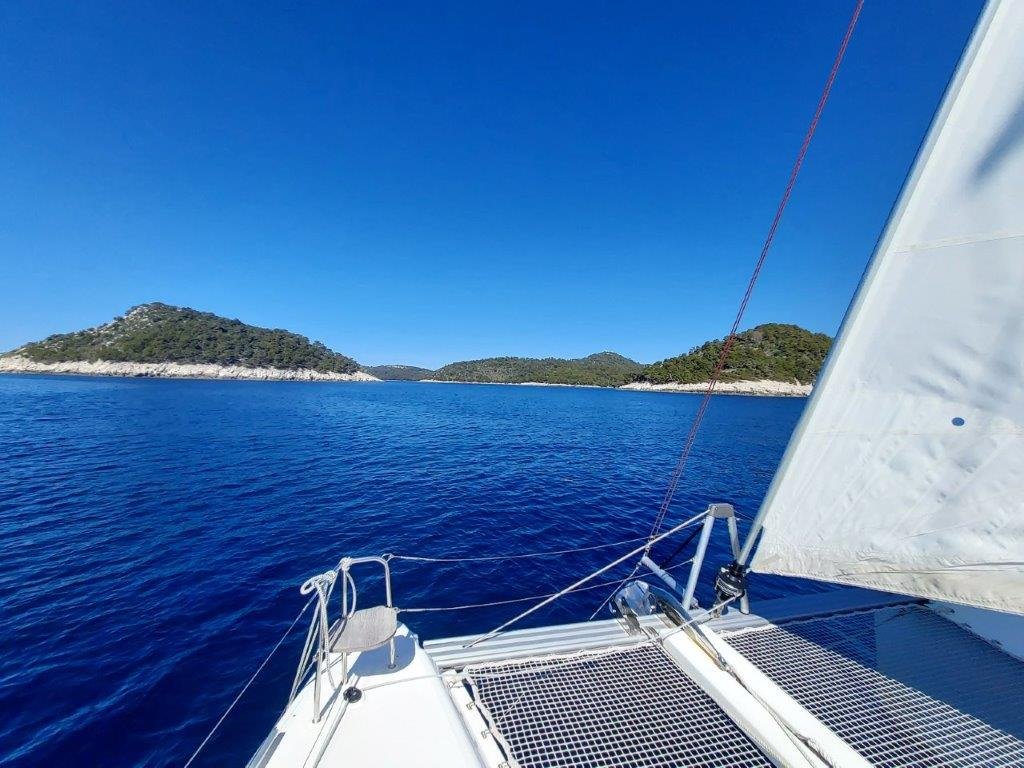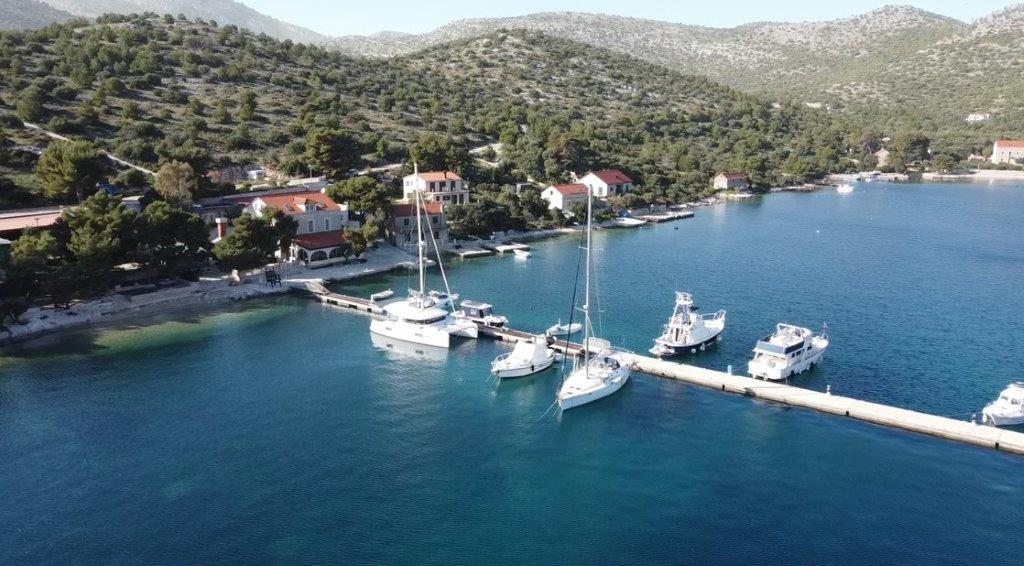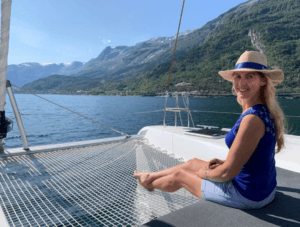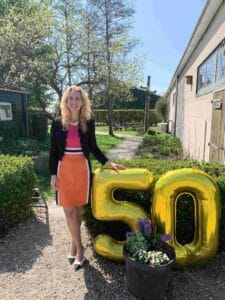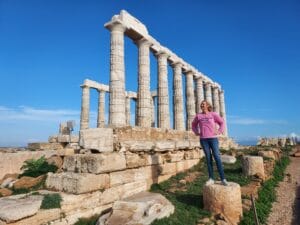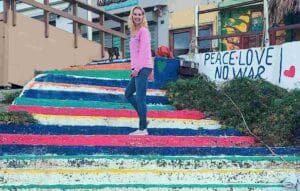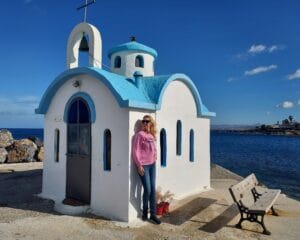After being in the Netherlands for 3 weeks in April, we continued our sailjourney in Croatia. We explored the island of Korčula and Lastovo Archipelago Nature Park.

Police investigation
When we arrived at the island of Korčula, we sailed into a nice bay at the east side of the island. While we checked online what interesting things there were to see on the island, we saw a motorboat speeding towards us. It actually came the boat was approaching so fast at such a high speed, that Gilles and I went on deck to check what was happening.
It turned out to be the Croatian police, they tied their boat to our boat and wanted to check our papers. In Croatia you need to have a vignette as a foreign sailor and also a crew list ready (with passport information etc). We all had that, so the tone of voice quickly changed from being strict to being friendly and after 15 minutes they motored away as quickly as they came.
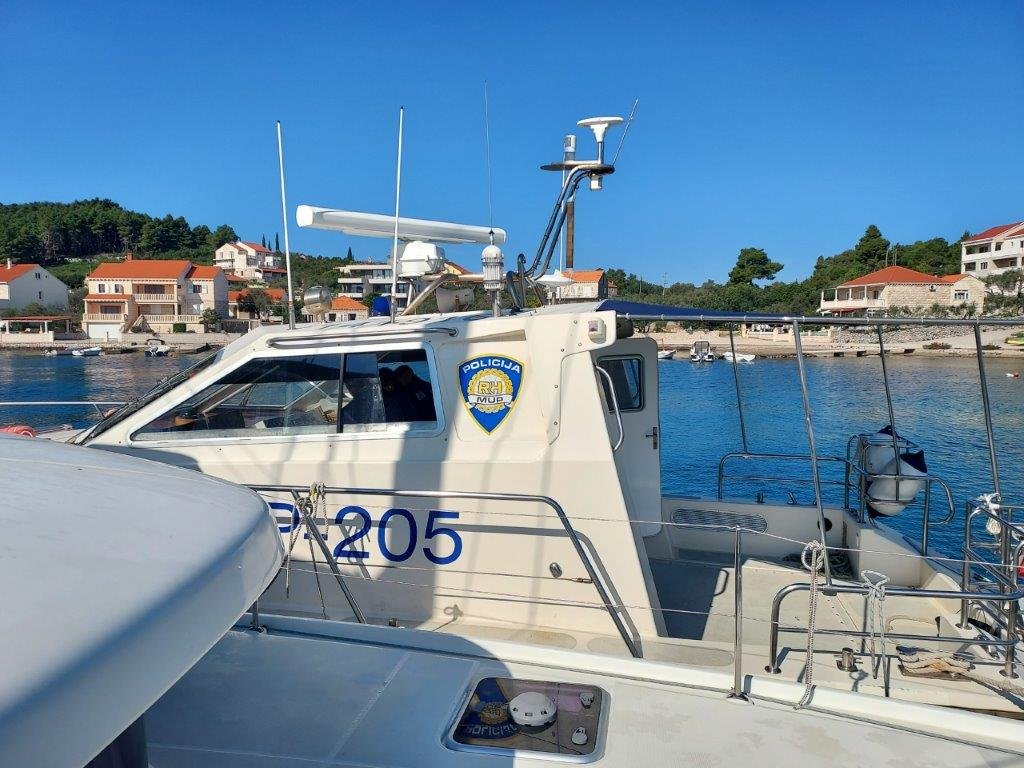
Blood rain
We also experienced an interesting weather phenomenon, the wind called scirocco or juno. We had heard about some strong winds in Croatia. For instance:
Bora: a cold, dry northeasterly wind that blows with great force from the interior towards the sea.
Mistral: a northwesterly wind that occurs mainly in summer and provides cooling along the Adriatic coast. This wind usually starts calmly in the morning and increases in strength during the day
Scirocco or Jugo: a warm and humid southeasterly wind that blows from the Sahara across the Mediterranean Sea to Europe. This wind can carry the Sahara sand.
So in this case we had Jugo, which brought desert sand, it actually covered the sunshine and gave the sky a screeny look, which made it seem as if the sunset had already started during the day. At night it started to rain, so the next day, we had this unpleasant surprise, that the boat was covered in think red/brown Sahara sand. We cleaned the boat, but still after a week, when we cleaned the boat again, the water had a red color when it flowed off the boat.


This phenomenon is called “blood rain”, in which rain, mixed with sand and dust from desert areas such as the Sahara, turns reddish-brown in color. When this sand enters the atmosphere, it can be carried over great distances by wind. When it comes down with rain, it looks like it is raining ‘blood’, hence the name.
Korčula
Now back to the good stuff: visiting the island of Korčula! The most beautiful town on the island is also called Korčula, but is often called Little Dubrovnik. The similarity is mainly due to the location on the water, the old city wall surrounding the city and the red roof tiles on the houses. I did not take this aerial photo myself, but it does show what a beautiful place the Old Town of Korčula is.

The walk up these stairs to the old city was very impressive and also shows the good weather we had that week, that’s the good side of the Scirocco or Jugo wind, it brings sunny weather!

The construction of Korčula started in the 15th century and at that time there were many sculptors who made beautiful decorations in the white limestone with which the houses were built.

The sculptors of Korčula were so famous that they also worked on many famous buildings abroad, such as the Parliament Building in Vienna for example and the City Hall in Stockholm.
Marco Polo
According to old legends, explorer Marco Polo (1254–1324) was born in Korčula, and in the town you will find a museum in tribute to this famous world traveler. Korcula used to be part of Venice, today there are still many people in Croatia who have the surname Korčula.

When you read about Marco Polo, you’re admiration for this man grows! At the age of 17, Marco Polo left for Asia with his father and uncle to trade. Something that people in the West of Europe liked to see was silk, gemstones, spices and porcelain from the East. The journey lasted about 24 years, and during this period they crossed many areas unknown to Europeans, including the famous Silk Road.
Marco Polo’s descriptions of the political structures, economies, and cultures of the Asian peoples he encountered were unprecedentedly detailed for his time. He recorded observations about paper money, coal fuel, ceramics and the use of petroleum.
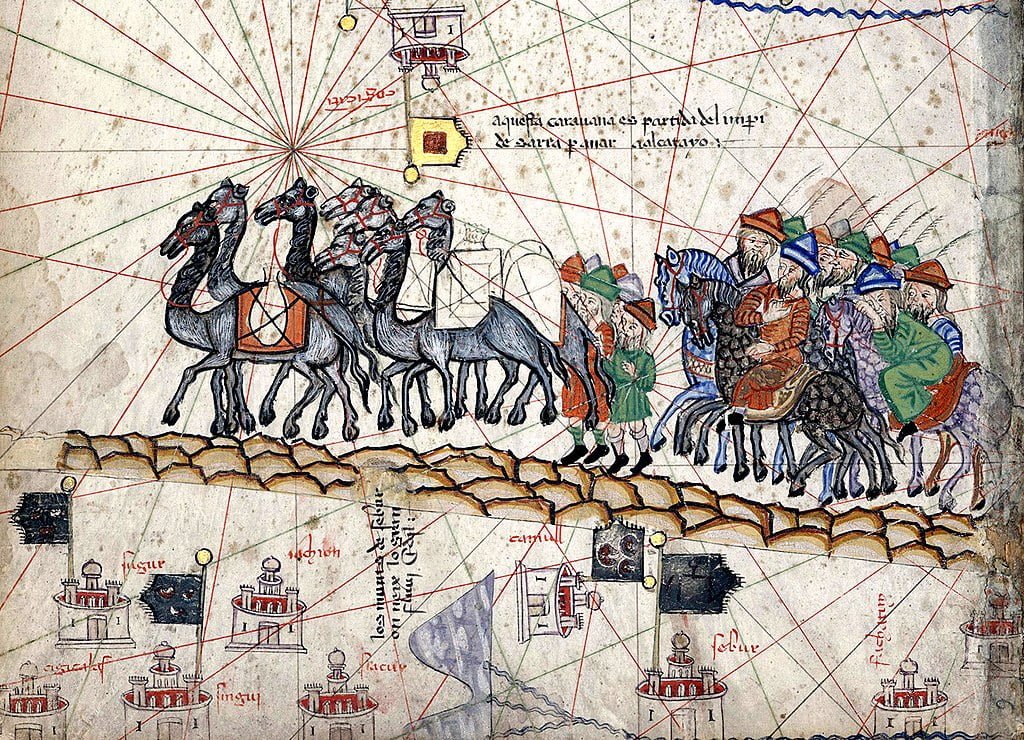
After his return to Venice, Marco Polo was captured during a conflict with Genoa. During his captivity he dictated his travel stories to a fellow prisoner, Rustichello da Pisa, which resulted in “Il Milione”, which became one of the most influential geographical and cultural guides of the Middle Ages. Marco Polo’s stories greatly stimulated European interest in the Orient and contributed to later voyages of discovery, including that of Christopher Columbus.
At the end of our visit of the old town of Korčula, we enjoyed walking along the medieval city walls and looking down on the beautiful waterline.

We sailed from the east side of the island of Korčula to the western tip, there was a beautiful bay and town called Vela Luka. We enjoyed staying at anchor here.

Lastovo Archipelago Nature Park
The next island that we were curious about, was south of Korčula and was called Lastovo. And this is why I like sailing in Croatia so much: it’s only 2 hours sailing and this island is completely different from Korčula! Korčula was vibrant with old towns, small streets and trendy city centers. Lastovo is a Naure Park, where there are hardly humans, but mainly forests and impressive mountain ranges.

When you arrive at the island of Lastovo, this is the view you get:

Because the island is not touristy, port prices (unlike on the larger islands in Croatia) are not high. So we booked a port for 2 days, from there to explore the island by e-bike and e-step.
Porto Russo
Entering the bay where the harbor Porto Russo was, on the south side of the island of Lastovo, was beautiful. The bay is almost 360 degrees enclosed by the mountain walls, which gives a very cozy feeling. We took beautiful images with our drone, from center of the bay where the harbor was and filmed a great view over the bay.
The reception from the harbor master was very friendly. He gave us a tip to visit the town north of the island, also called Lastovo. It was quite challenging to cycle there, because the mountainrange in the middle of the island was high, so our bikes had to work hard 😉. But once we came closer to the small village, it was magnificent to see it on the mountain hill:
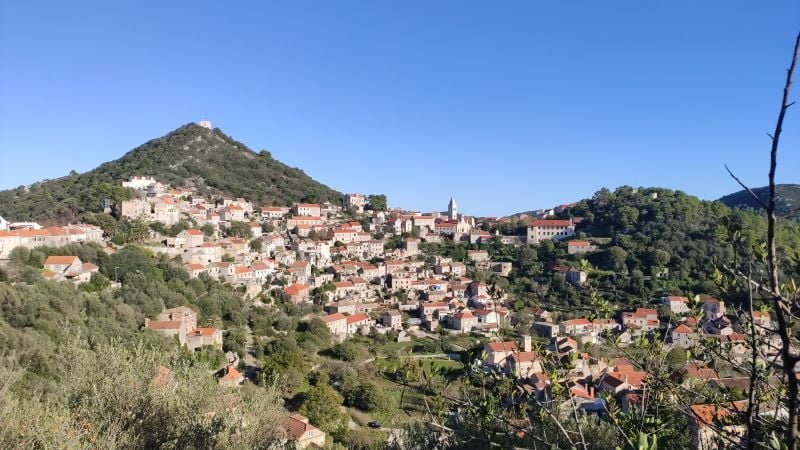
We cycled around the little town.
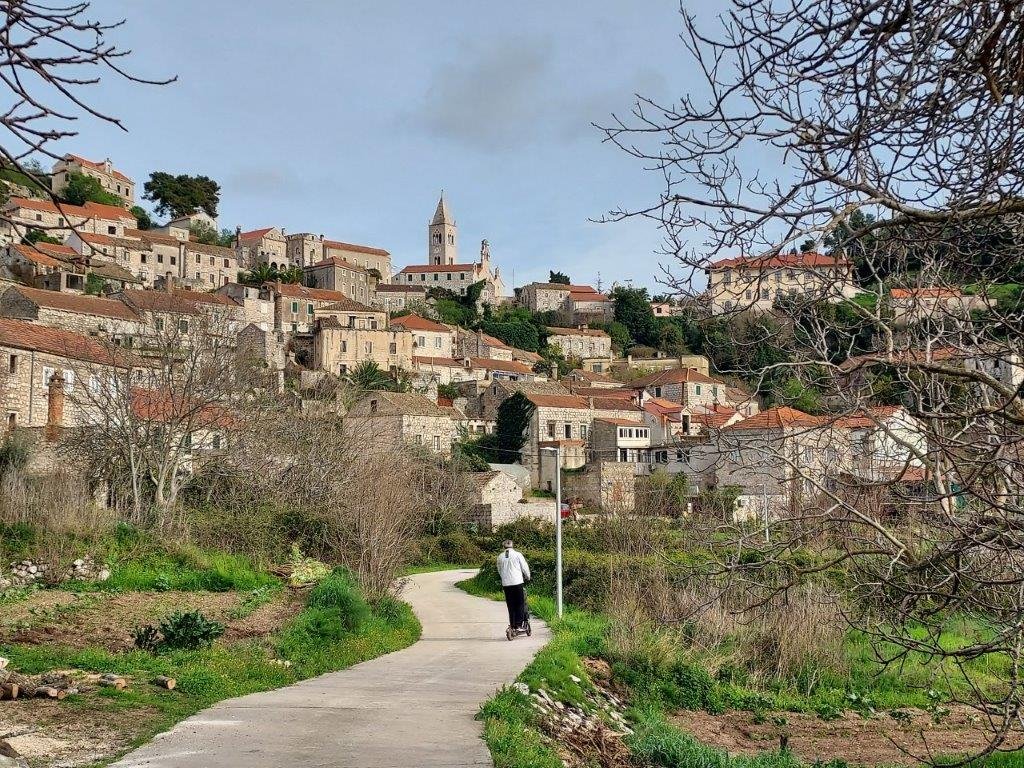
We noticed the cylindrical chimneys that the locals call “fumari”. They are a status symbol and emphasize the wealth of the homeowner. They are reminiscent of minarets. It is not known whether this is coincidence or whether it is a copy of fumari from Italian villages. There are no two identical chimneys. Each new fumar was larger and more unusually decorated, as if the people of Lastovo were competing with their neighbors. They placed animal horns on fumari, which also served as protection against evil eyes. There are unique and used to be a competition to build the most beautiful and original chimney.
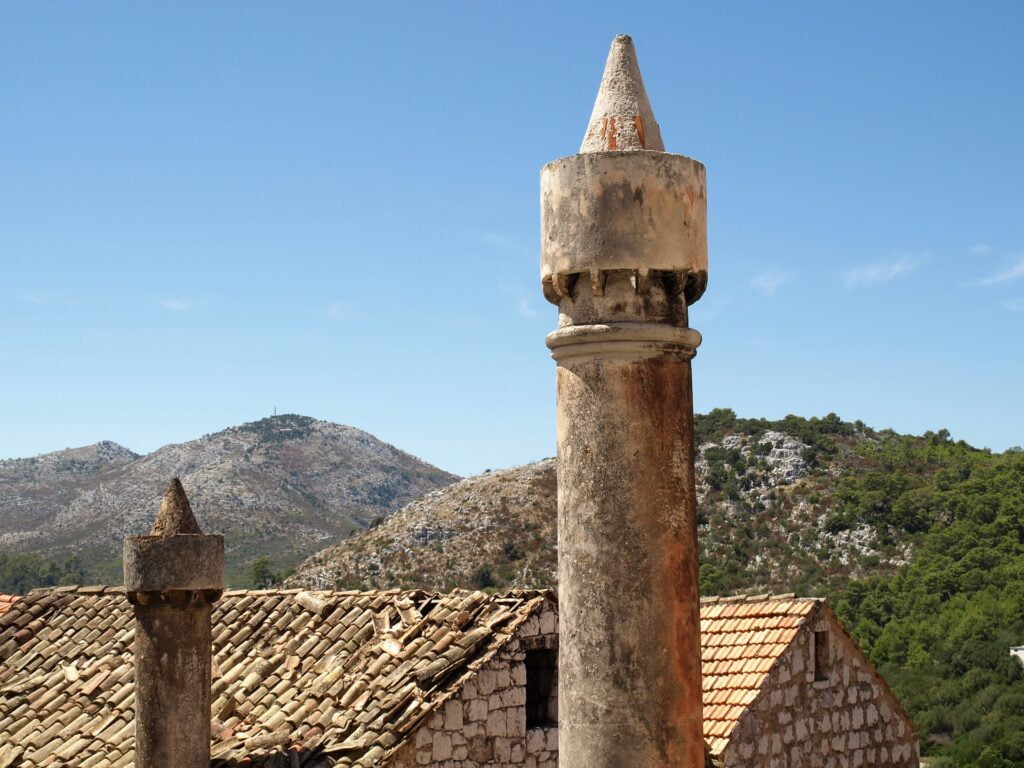

It’s also interesting to see that the tourist season really hasn’t started yet. We were told that in June tourists start to come to the islands, so people are now renovating their shops and preparing for the big arrival.
We enjoyed cycling in this rural area and went back to the harbor.

We were told that Lastovo has one of the darkest skies in Europe. The Milky Way can be seen here with the naked eye. According to Slovenian astrographers, Lastovo has the most beautiful starry sky in Europe thanks to its distance from the mainland and all the possible pollution. For this purpose, all public lighting on the island of Lastovo has been replaced by ecological lighting with 0% emissions to the air.
Konoba
Back in the harbor, I spoke to the friendly harbormaster who is also the owner of the restaurant at the harbor, which they call a ‘konoba’ (tavern). It was closed now, because of the early season and I told him that we hoped it would be open, because he had such great reviews online for his restaurant.

He said, if we like, he would open the restaurant tomorrow evening and make a fish plate if we would like that. Of course we would really appreciate that! Then the next day, we saw a fishboat arriving with the fish for that night. Around 18.00h a young guy dressed in a chef’s costume, came to the catamaran and asked us how we wanted the St. Peter’s fish (also known as John’s fish or Sunfish) that the fisher brought from the Adriatic sea, prepared: made: grilled or cooked. We choose grilled.


And then at 19.00h we walked to the restaurant, got a VIP treatment for the two of us and had a great dinner!

When we sailed away the next morning, we looked back on a fantastic time in Lastovo and were very grateful to meet such beautiful nature and people!
